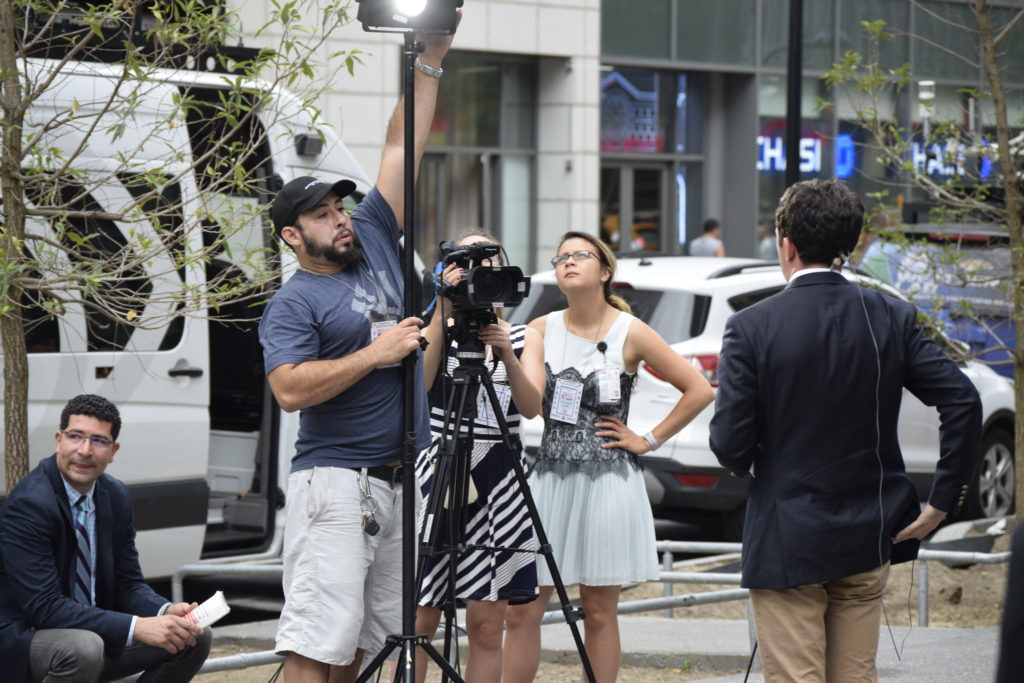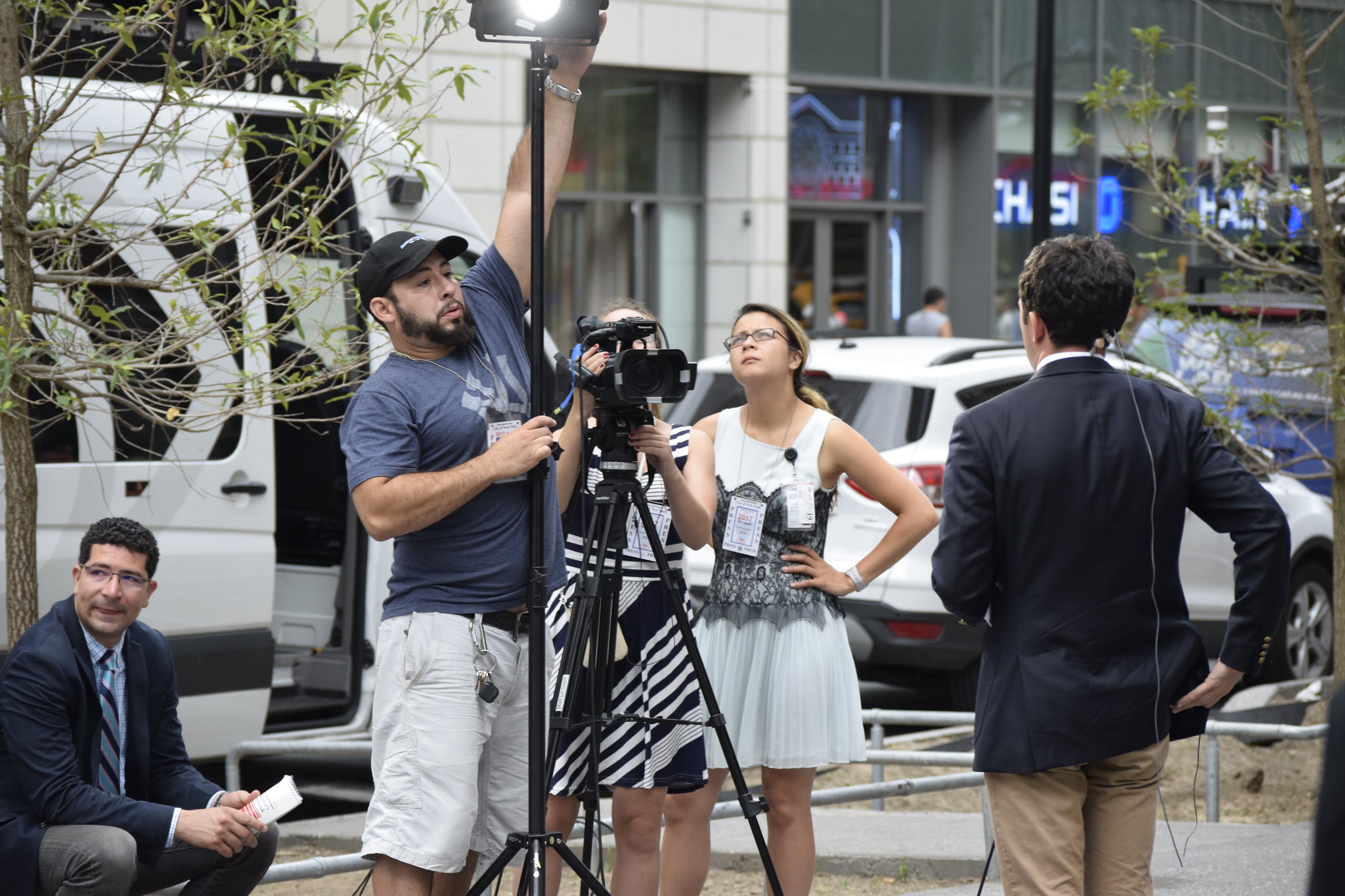Heidi Randhava, a reporter and advertising manager for the Evanston Roundtable, a hyper-local digital media publication in the lakefront city of Evanston north of Chicago, calls herself a “cheerleader” for local news.
“Even if you tune into CNN, or listen to local officials, being a consumer of local news is the best way in which people in the community learn,” Randhava said.

But that doesn’t mean news consumers always do that. Local media outlets are constantly in a battle for views and attention, which means they also are constantly struggling for advertising and subscription dollars to stay afloat.
A new tax credit from the federal government could spell relief for hundreds of them, including publications like the Roundtable, which covers local government, school issues, new businesses and the arts in Evanston, located 12 miles from downtown Chicago.
The measure, part of President Joe Biden’s social $1.85 trillion social spending bill, would mark the first time the federal government has offered targeted support for the local news industry. The bill, which narrowly passed the House last month, could send $1.67 billion over the next five years to newspapers, TV stations, radio stations, and other outlets.
“It’s a modest and helpful step to deal with a crisis,” said John T. Shaw, director for the Paul Simon Policy Institute at Southern Illinois University at Carbondale. “We have more and more news deserts, and communities simply do not have anyone covering local news and I believe that’s been very damaging for these communities and our country.”
Washington insiders expect the bill to pass the Senate, although it’s not clear when that would happen, if it ultimately does. Democratic leaders want to deliver the package that overhauls the nation’s healthcare, climate, education, immigration and tax laws by Christmas. The bill is a central part of Biden’s “Build Back Better” economic agenda.
“I think [this bill] saves outlets from having to lay off journalists, it saves them from having to be purchased by corporations and CEOs who have their own editorial agendas,” said Abby Lee Hood, a freelance journalist and content creator based in Nashville.
Outlets that could benefit greatly from this lifeline from the government are hyper-local outlets, which are typically found in small and mid-sized cities and towns. The Evanston Roundtable recently joined the hundreds of other local papers filing for non-profit status to avoid the fate of going under.
“It was [purely] financial,” said Mary Gavin, the founder and publisher emerita of the Roundtable. “We followed the traditional advertising model. That was getting less and less to the point where we were losing a lot of money and didn’t see a way to change that.”
Gavin acknowledged that while moving toward a non-profit model isn’t the one-and-done solution, doing so can allow the Roundtable to write-off donations and apply for public and private funding. Gavin said that help from the government also would be a boost for publications like the Roundtable.
“It would be nice to have a solid funding source with no strings attached,” Gavin said. “We don’t want to get to the point that if someone’s giving us money, we have to write the way they want us to.”
Well before the tax credit was proposed, local news outlets already had started to shift toward nonprofit status. The move wasn’t limited to small, suburban outlets, either.
The Chicago Sun-Times, the board of directors of Chicago Public Media, parent company of NPR station WBEZ 91.5 voted this fall to pursue an acquisition of the paper, which has seen its share of financial, editorial and staffing woes. The proposed acquisition would make The Sun-Times a non-profit, a deal that Chicago Public Media said it hopes to close by the end of the year.
“This is an investment and growth opportunity. We are looking to build our staff, we’re looking to build the audience, we’re looking to invest in journalism,” said Matt Mogg, the newly named CEO of Chicago Public Media in a joint press release from both organizations.
According to a 2020 report from the University of North Carolina at Chapel Hill, the number of journalists employed by newspapers has been cut in half since 2004. Print advertising revenue also saw its numbers drop to record industry lows. The effects of the shrinking landscape have been felt from large metro papers to the small, century-old weeklies that once survived the Great Depression.
Needing to find a way to ensure the Roundtable would survive, Gavin, along with the local reporters and publishers decided to shift to becoming a non-profit to ensure the organization could have “a more financially sustainable future.”
To make the transition from a limited liability company to a nonprofit, the Roundtable formed a board of directors composed of writers, community members, and Gavin herself. The Roundtable is officially recognized by the State of Illinois as a nonprofit. The outlet is in the process of filing for nonprofit status under the Internal Revenue Service, which would make the paper tax-exempt, Gavin said.
Traditionally, news outlets have been privately funded and owned companies that relied heavily on advertising dollars to maintain afloat. With the increase in streaming services and online news sites, hyper-local papers found they had new competitors: the internet.
Politico media reporter Jack Shafer argued that while company-wide takeovers and tech giants like Facebook share in the blame of the decline in local news, people tend to miss the underlying cause: the readers and consumers.
“It’s not that nobody wants to read local news; it’s just that not enough people do to make it a viable business,” Shafer wrote in a June 2021 column.
It’s hardly a new problem. A 2009 Pew Research study found that a whopping 42 percent of those surveyed would miss their paper “not much” or “not at all” if it vanished.
Jhmira Alexander, president of Public Narrative, a non-profit media organization that connects journalists to community leaders through effective storytelling and messaging, says media organizations have to become people focused and invest back into its newsrooms and the communities they serve.
“You’re asking for people to invest their time, their talents, their ideas, their innovations, their creativity to sustain outlets that don’t even belong to them,” Alexander said. “In addition to a bottom line, there has to be a balance.”
Figures from a Pew Research Center analysis of data from the Bureau of Labor Statistics from July 2021 found that newsroom employment in the United States has dropped by 26 percent since 2008. All the while jobs have increased in the digital publishing sector.
“Knowing your demographics and knowing what they want and adapting accordingly to create new income streams is paramount,” Hood said. “Right now, everybody is complaining about the ‘subscriber vs advertising model’ and either of those alone are the answer.”
For many hyper-local papers, the transition to a nonprofit status is a learning curve. Both Randhava and Gavin said that the staff of the Roundtable are working together and remain committed to serving the Evanston community with fair, objective journalism.
Many see the future of local news, particularly with newspapers as a hybrid between the print and digital space. With the recent news from Chicago Public Media and the Sun-Times, people like Alexander are optimistic about what the new alliance means for the future of journalism.
“As we’ve seen over the last 18 months, local media has stepped up and found ways to keep [Chicagoans] informed,” Alexander said. “We’re seeing a tremendous shift. Only great things can come from this.”
Charles Jefferson is a Chicago-based journalist, communications and media professional, whose work has appeared on WTTW-TV, WGN-TV, and Chicago Talks. He is an active member of the Chicago chapter of the National Association of Black Journalists.



